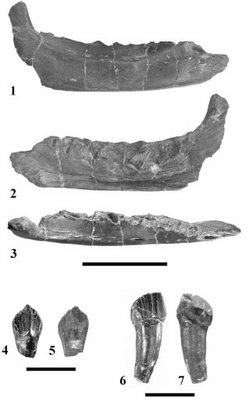Oviraptor gigante

A NEW OVIRAPTOROSAUR (THEROPODA, MANIRAPTORA) FROM THE LATE CRETACEOUS (CAMPANIAN) OF UTAH
LINDSAY E. ZANNO and SCOTT D. SAMPSON
Utah Museum of Natural History and Department of Geology and Geophysics, University of Utah, 1390 E. Presidents Circle, Salt Lake City, Utah 84112, U.S.A.
ABSTRACT: Recent field expeditions to Upper Cretaceous deposits within Grand Staircase-Escalante National Monument, southern Utah, have revealed a diverse dinosaurian fauna that includes a previously unknown oviraptorosaur theropod. Represented by a single partial specimen consisting of manal and pedal elements, this new taxon, Hagryphus giganteus, gen. et. sp. nov., is estimated to be 30–40% larger than the coeval oviraptorosaur Chirostenotes. The holotype consists of a nearly complete, articulated left manus, a partial, articulated pedal digit II, and a series of fragmentary pedal phalanges and distal metatarsals. Several autapomorphies are present in the manus, related primarily to proportional differences in metacarpals and phalanges. Previous finds of North American oviraptorosaurs have been restricted to Alberta, Montana, and South Dakota. The discovery of this new specimen from southern Utah greatly expands the known geographic distribution of these theropods, nearly doubling the previously documented range of North American oviraptorosaurs.
















